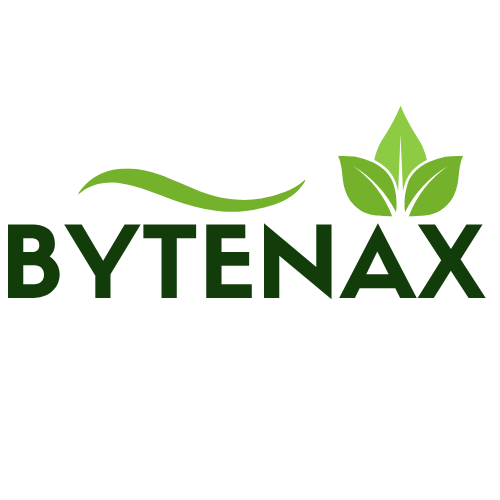Anúncios
Can a single half-hour session shift your company from good intentions to fast, measurable action?
You’ll get a clear, service-oriented path you can use today. This intro shows short steps, simple examples, and ready toolkits that let your team launch micro-actions in minutes.
Trusted engagement platforms report over 50,000 employees taking quick, high-impact moves that build ownership fast. That data proves small sessions can grow real culture change.
In this section you’ll learn how to pick one narrow goal, run a 30-minute action, and measure the business value quickly. Expect checklists and lightweight dashboards that scale across your supply chain without extra overhead.
Read on to see a practical next step you can share with your team and suppliers right now.
Anúncios
Introduction: Why 30 minutes can shift your culture from compliance to impact
Sustainability can begin with a single, focused 30-minute effort that moves your team from routine compliance toward measurable impact.
30-minute sessions reduce friction and force a clear choice: pick one goal, take one step, and measure the result. Partners in the “30 Minutes – Sustainability Talks” series—speakers from Capgemini, Accenture, Sociedade Ponto Verde, Shaeco, and EY—show how short, structured time blocks accelerate collaboration and surface real constraints.
In practical terms, this approach helps your business cut through competing priorities. You get visible wins that build confidence and produce data to refine long-term goals. Small, repeatable steps also make ownership clearer and reduce the common challenges of low buy-in and unclear roles.
Anúncios
- Pick one step your company can finish in the time available.
- Bring the right people and agree what “good” looks like.
- Repeat the cadence so progress compounds week by week.
For practical frameworks and deeper guidance, see our guide on sustainability in business to help you translate short sessions into measurable outcomes.
apply sustainability 30min: a practical, time-boxed workflow you can start today
Focus on one small experiment. Design a tiny, time-boxed activity that proves progress fast. Name the specific goals for the week so everyone knows what success looks like.
Set a single goal and one immediate step
Begin the session by agreeing on one goal and the smallest first step that fits the timebox.
Keep the scope tight: draft a short message, pick a template, or confirm tracker access.
Schedule micro-actions and assign ownership
Assign one visible owner so the whole team knows who to contact. Use a lightweight checklist to record tasks and avoid heavy project tools.
- Agree one clear metric you can capture with light data.
- Turn the goal into a mini project with start/finish and two checkpoints.
- Log what was done, next steps, and the responsible person before you close.
- Save brief assets (script, tracker, results) in a shared folder for reuse.
- Finish with a 2-minute retrospective to note one small improvement.
These fast cycles help your teams and management move from idea to repeatable projects without overhead. Run the workflow weekly to build momentum.
Quick wins toolkit: bite-sized actions you can launch this week
You can launch a bite-sized activity that shows clear results and fuels team energy. Use a 7-day micro-challenge as a starter: three 10-minute actions that fit into regular workdays.
Employee engagement challenges into momentum: launch a micro-challenge
Run a 7-day micro-challenge. Day 1 is a 10-minute kickoff message. Day 3 is a 10-minute check-in. Day 7 is a 10-minute wrap and metric share. Keep the scope tiny so people join easily.
Plug-and-play templates, scripts, and project ideas to save time
Templates speed execution. Provide kickoff emails, a Slack post, and a one-page brief. Include a short script for leaders to read so messages are consistent and repeatable.
- Features to add: shout-outs, badges, and a rotating spotlight.
- Tie each action to one small metric, like sign-ups or items diverted.
- Product ideas: test a lighter material for one SKU sample or update a single PDP with sourcing details.
Use peer recognition to increase participation and measurable impact
Celebrate progress openly. Public recognition drives participation and shows the real value of small wins.
End every challenge with a short wrap-up note and a clear next step. Reuse the scripts and invite volunteers to nominate the next quick win so momentum compounds across teams.
Build a volunteer-powered team to scale engagement
Small volunteer roles unlock peer influence and make engagement more realistic for busy teams. Start by naming simple, visible tasks so people know how to help without added friction.
Identify internal champions and micro-roles across departments
Ask managers to point to employees who already influence others. These informal leaders are your best early champions.
Map two to three micro-roles you can fill quickly. Think communications lead, data note-taker, and recognition host. Keep each role time-boxed and public.
Personalize participation so everyone can contribute meaningfully
Offer multiple ways to help: write a short post, run a five-minute demo, or collect quick feedback. Different strengths fit different tasks.
- Use a short playbook with weekly prompts and a 15-minute huddle template.
- Rotate buddies or departments to spread skills and avoid burnout across teams.
- Document roles and notes in one shared folder to keep compliance simple.
Frame volunteer time as career development by tying tasks to visible learning and growth. That shows clear value and helps move culture from checklist thinking toward true ownership.
These light strategies reduce burden on central coordinators and scale culture fast. Track small wins, spotlight contributions, and adjust roles monthly to keep momentum.
Data, consent, and website experience: make cookies work for sustainability
Your site can give visitors simple, honest choices about their data in a few clicks. Clear cookie controls build trust and let users set their preferences without friction.
Clarify consent options
Map five plain categories: necessary (core security and login), functional (sharing and feedback), performance (site speed KPIs), analytical (traffic and bounce), and advertisement (personalized ads and cross-site tracking).
Explain each in one line so visitors quickly know what information is collected and why. Note that opting out may change some features.
Design a clear manage-consent flow
Offer equal-weight buttons like Accept All and Cookie Settings. Provide a clear “Manage consent” path and let people set granular preferences.
- Keep settings reachable from a footer link or account menu for later access.
- Store choices and let users change preferences anytime.
- Be concise to avoid banner fatigue and preserve the website experience.
Use privacy-by-design to build trust
Collect the minimum data needed and document what analytics capture (page views, traffic sources) without exposing personal details.
Train your team, test banners on desktop and mobile, and update consent records when tools or categories change. Respectful consent builds long-term access to useful data and stronger customer relationships.
Foodtech and supply chain transparency in 30 minutes
Start by choosing one product you can fully trace in a single meeting. Use a focused 30-minute slot to map the core chain and find the single data access gap that blocks better visibility.

Map a single product’s chain and identify one data access gap
List four stops: origin or farm, first processor, distributor, and retail handoff. Keep the map simple so the group can agree fast.
Pick one missing data point—like harvest date or lot code—and note which partner holds access. That defines a clear, feasible fix.
Explore blockchain-based traceability pilots for procurement
Choose a narrow pilot: capture batch IDs from one supplier and timestamp them in a shared ledger. Limit scope to one lane or lot to reduce burden.
Define success as closing that single access gap and proving reliable reads for procurement.
Connect transparency to customer information and product value
Translate improved chain data into clear customer information, such as origin notes or freshness windows—avoid health claims.
“Small pilots that reduce data friction unlock faster trust and measurable value.”
- Run the 30-minute mapping.
- Assign procurement to request the missing field.
- Launch a tight ledger test and track one metric on a simple dashboard.
From talks to action: integrate cross-functional strategies
Move from conversation to measurable work by naming one sponsor and one deliverable. This makes the jump from ideas to a timed project that your team can finish and report on.
Transversal collaboration: IT, procurement, marketing, and sustainability
Bring the right functions into one quick kickoff. Involve IT for dashboards, procurement for supplier commitments, marketing for clear messages, and sustainability for standards and compliance.
Turn expert insights into small, time-bound projects and goals
Create a one-page brief that names a sponsor, a sponsor’s goal, and a 30-minute kickoff. Keep the scope tiny—standardize one data field across three vendors or add a single transparency clause to a trial contract.
- Define the tiny project, its metric, and the owner.
- Schedule 15-minute cross-functional stand-ups and one shared tracker.
- Close in two weeks with a short readout and next action.
“Small, focused pilots reduce friction and surface real value fast.”
Document responsibilities and escalation paths so compliance and risk teams stay comfortable. Measure value in clarity, speed, and fewer emails to get the same chain data. Repeat monthly and expand slowly for steady progress.
Service options: partner support, resources, and measurable outcomes
A focused partner can turn a single idea into a testable project that proves value fast. Start with a short scoping conversation and get a clear outcome you can measure.
Book a free 30-minute consultation to scope your first use case—employee engagement, traceability for one SKU, or a cookie consent refresh that honors user preferences.
Choose the right options for your team
Pick modular services that match your bandwidth and skills. Select lightweight features or hands-on support depending on how much time your team can spare.
- Modular options: micro-challenge toolkits, volunteer playbooks, cookie banner design and testing, or a focused supplier data pilot.
- Feature choices: ready-to-use scripts, templates, or done-with-you support to speed traction.
- Website and cookies: we design a simple manage-consent flow that respects preferences and improves user experience.
What you’ll get and how we measure success
We set up clear access to resources and dashboards so stakeholders see progress without digging through files.
- Two-week supplier pilot: one vendor and one data field to prove supply access and traceability.
- Engagement setup: recognition frameworks plus analytics to track participation and momentum.
- Short success report with baseline, actions taken, and next recommended step for compounding value.
“Implementation respects user choices, avoids dark patterns, and focuses on clarity and performance.”
Want broader guidance? See research and frameworks on ESG and options for partner-led programs at ESG and sustainability resources.
Conclusion
Close by turning one insight into a short, repeatable action your team can own. Take that single step, run it in a tight timebox, and capture a quick result so momentum builds.
Keep linking small wins across your supply chain. Focus on one supplier or one data field at a time so the work stays practical and measurable.
Make transparency your goal: map how a product moves through the chain, show clear labels, and measure the business value of each change.
Explore food culture consciously and learn from diverse traditions. For health-specific questions, consult licensed professionals who know your context.
Celebrate progress, refine your method, and keep the next session short and focused so improvement compounds.



